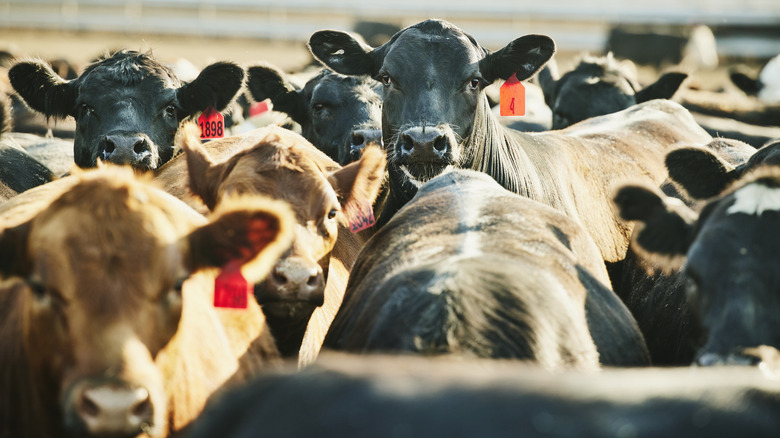Are You Overpaying For Beef? The Average Beef Costs To Know Before You Shop
We have endured painful price hikes for a carton of eggs in part due to avian flu, prompting omnipresent U.S. diners to add menu surcharges. Though the collective complaining hasn't been as loud about the cost of coffee, multiple factors — including climate-related disasters in bean-growing countries like Brazil and Vietnam — have also made it more expensive to score that morning jolt. Now the price of another American kitchen staple is soaring smack dab in the middle of summer grilling season: beef. According to the Bureau of Labor Statistics, the average cost of a pound of 100% ground beef in June 2025 was $6.12. That's a nearly 12% increase from the same time last year and a record high. Steaks weren't far behind. On average, cuts like sirloin and round were going for $11.49 a pound, up from $10.64 in 2024. But does that mean you're actually forking over more than you should? Not necessarily, when you examine the factors that have led to the phenomenon.
Sure, inflation continues to put pressure on Americans' grocery budgets, but the 12-month rate as of June that included food prices was 2.7%, far behind the overall rising cost of your backyard cookout burger patties. One critical cause is the declining number of cattle. That may sound counterintuitive; the U.S. produces the most beef in the world, a statistic that rings true to anyone who lives in a part of the country where cattle guards are more common than stoplights. However, a National Agricultural Statistics Service inventory found that the U.S. had 86.7 million head of cattle as of January 1, 2025, the lowest number since 1952.
Where's the beef?
Much of the beef reared here goes into what the U.S. Department of Agriculture calls the cattle cycle, which is typically eight to 12 years. During that time everything from weather patterns to the price of animal feed can affect herds and the overall market. For example, droughts in both the early 2010s and 2020s made usable pastures harder to come by, resulting in culled livestock. Rising energy prices in the past also contributed to smaller herds. And since it takes time to rebuild those numbers, both because of a cow's gestational period and the number of years it takes to raise cattle for the market, the country has dealt with a contracted population for some time. However, American consumers' taste for beef has not waned, which means demand is outpacing supply, which means price rises.
So you may be wondering how to save a few bucks if beef happens to be what you're craving. One simple trick is purchasing ground pork to use as the centerpiece of your burgers — it's generally less expensive, but with the correct fat content and spiced correctly, you'll get a perfectly juicy substitute. Costco card holders will also want to read these 12 money-saving tips from the store's butchers, which naturally includes opting for bulk orders.

